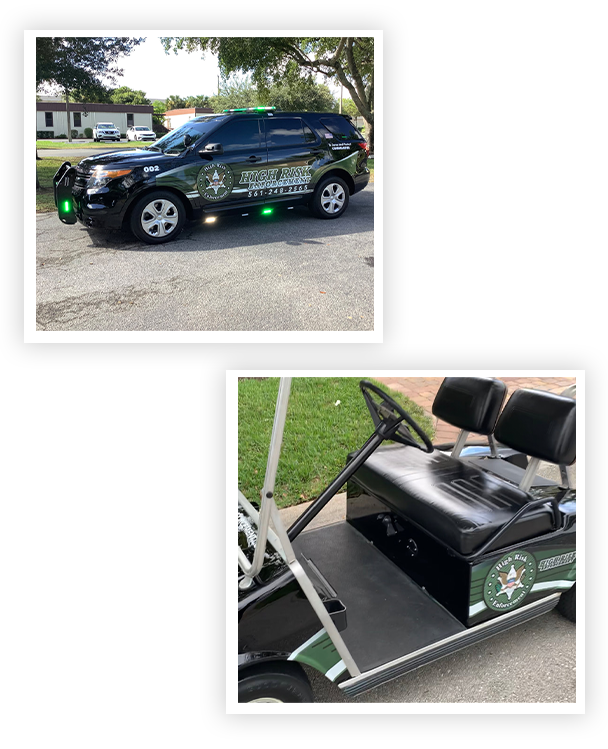High Risk Enforcement: What It Really Means And Why It Matters
High risk enforcement is not just a term thrown around in police reports or legal documents. It’s a critical component of modern law enforcement that impacts public safety, community trust, and even your daily life. Whether you’re aware of it or not, high-risk enforcement plays a significant role in shaping how law enforcement agencies operate and protect citizens. So, buckle up because we’re diving deep into this topic, and trust me, it’s more fascinating than you think.
Imagine this: a city where law enforcement doesn’t prioritize high-risk situations. What happens? Chaos. Crime rates skyrocket, and communities feel unsafe. That’s why high-risk enforcement exists—to tackle the toughest, most dangerous scenarios head-on. But what exactly does it involve? And how does it affect everyday people like you and me? Let’s break it down.
This isn’t just about cops and robbers. It’s about understanding the strategies, tools, and tactics used by law enforcement to handle high-risk situations effectively. By the end of this article, you’ll have a clearer picture of why high-risk enforcement matters, how it works, and what it means for your community. Sound good? Let’s get started!
Read also:Alee Hassan Shah The Rising Star Whos Taking The World By Storm
What Exactly is High Risk Enforcement?
Let’s start with the basics. High-risk enforcement refers to the practices and strategies employed by law enforcement agencies to address situations that pose significant danger or risk. These situations can range from armed suspects, hostage scenarios, and high-speed chases to drug busts and organized crime operations. The goal is simple: neutralize threats while minimizing harm to both officers and civilians.
Think of it like this: imagine a SWAT team preparing for a raid on a known drug den. They don’t just barge in without a plan. They assess the risks, gather intelligence, and execute a carefully planned operation. That’s high-risk enforcement in action. It’s all about balancing effectiveness with safety.
Why High Risk Enforcement is Essential
Without high-risk enforcement, law enforcement agencies would struggle to handle the most dangerous situations. Here’s why it’s essential:
- Safety First: Protecting officers and civilians is the top priority in any high-risk operation.
- Crime Prevention: By targeting high-risk individuals and activities, law enforcement can reduce overall crime rates.
- Community Trust: When high-risk enforcement is done right, it builds trust between law enforcement and the communities they serve.
But here’s the catch: high-risk enforcement isn’t without its challenges. We’ll dive into those later, but for now, let’s focus on the strategies and tools used in these operations.
Key Strategies in High Risk Enforcement
High-risk enforcement relies on a combination of strategies, training, and technology to ensure success. Here are some of the most common approaches:
1. Risk Assessment and Planning
Before any high-risk operation, law enforcement agencies conduct thorough risk assessments. This involves gathering intelligence, analyzing potential threats, and developing a detailed plan of action. Think of it as a blueprint for success.
Read also:Unstoppable Bear Pile The Ultimate Guide To Understanding And Dominating This Trend
For example, if a suspect is known to be armed and dangerous, officers will plan their approach carefully, ensuring they have the right equipment and backup. It’s all about preparation.
2. Use of Specialized Units
Not all officers are trained to handle high-risk situations. That’s where specialized units like SWAT teams come in. These highly trained professionals are equipped with the skills and tools needed to tackle the toughest scenarios.
Specialized units often undergo rigorous training, including simulations, tactical exercises, and scenario-based drills. This ensures they’re ready for anything.
3. Technology and Equipment
Modern high-risk enforcement wouldn’t be possible without cutting-edge technology. From body cameras and drones to ballistic shields and non-lethal weapons, law enforcement agencies have access to a wide range of tools to enhance safety and effectiveness.
For instance, drones can be used to surveil a suspect’s location before an operation, providing valuable intel to officers on the ground. It’s like having eyes in the sky.
The Challenges of High Risk Enforcement
While high-risk enforcement is crucial, it’s not without its challenges. Let’s explore some of the biggest hurdles faced by law enforcement agencies:
1. Balancing Safety and Effectiveness
One of the biggest challenges is finding the right balance between safety and effectiveness. Officers must make split-second decisions in high-pressure situations, and those decisions can have life-or-death consequences.
For example, in a hostage situation, officers must decide whether to negotiate or take immediate action. Each choice comes with its own set of risks.
2. Public Perception and Trust
High-risk enforcement can sometimes lead to negative public perception, especially if operations go wrong. This can erode trust between law enforcement and the communities they serve.
Transparency and communication are key to building trust. When agencies are open about their processes and decisions, it helps reassure the public that they’re acting in everyone’s best interest.
3. Budget Constraints
Let’s face it—high-risk enforcement isn’t cheap. Specialized training, equipment, and technology all come with a hefty price tag. Many law enforcement agencies struggle to secure the funding needed to maintain these critical resources.
Despite these challenges, high-risk enforcement remains a vital component of modern law enforcement. Now, let’s look at some real-world examples to see how it plays out in practice.
Real-World Examples of High Risk Enforcement
To truly understand high-risk enforcement, it helps to look at real-world examples. Here are a few cases that highlight the complexities and importance of this field:
Case Study 1: The Boston Marathon Bombing
When the Boston Marathon bombing occurred in 2013, law enforcement agencies were faced with a high-risk situation that required quick and decisive action. Through careful planning and coordination, they were able to apprehend the suspects and prevent further attacks.
This case demonstrated the importance of collaboration between local, state, and federal agencies in high-risk situations. It also highlighted the role of technology, such as surveillance cameras and social media, in identifying suspects.
Case Study 2: The LA Riots
The LA Riots of 1992 were a defining moment in high-risk enforcement history. Law enforcement agencies struggled to maintain order amidst widespread violence and destruction. While the operation wasn’t perfect, it served as a learning experience for future high-risk scenarios.
Today, agencies are better equipped to handle large-scale disturbances, thanks to lessons learned from cases like this.
The Role of Training in High Risk Enforcement
Training is the backbone of high-risk enforcement. Without proper training, officers wouldn’t be able to handle the complex and dangerous situations they face on a daily basis. Here’s a closer look at how training shapes high-risk enforcement:
1. Tactical Training
Tactical training focuses on the skills and techniques needed to execute high-risk operations safely and effectively. This includes everything from firearms training to hand-to-hand combat.
Officers also participate in scenario-based training, where they simulate real-world situations to hone their skills. This type of training is invaluable in preparing officers for the unexpected.
2. Crisis Negotiation
Crisis negotiation is another critical component of high-risk enforcement. Officers trained in this area work to de-escalate tense situations, often preventing the need for force.
For example, in a hostage situation, a skilled negotiator can make the difference between a peaceful resolution and a deadly outcome.
Technology’s Impact on High Risk Enforcement
Technology has revolutionized high-risk enforcement, providing officers with tools that enhance safety and effectiveness. Here are a few examples:
1. Body Cameras
Body cameras have become a staple in modern law enforcement. They provide a transparent record of high-risk operations, helping to build trust with the public and protect officers from false accusations.
Plus, they serve as valuable evidence in court, ensuring that justice is served.
2. Drones
Drones are increasingly being used in high-risk enforcement for surveillance and reconnaissance. They allow officers to gather intelligence from a safe distance, reducing the risk of injury or death.
For example, a drone can be used to monitor a suspect’s movements before a raid, providing officers with critical information to plan their approach.
Future Trends in High Risk Enforcement
As technology continues to evolve, so too will high-risk enforcement. Here are a few trends to watch for in the coming years:
1. Artificial Intelligence
AI is already being used in law enforcement for predictive analytics and facial recognition. In the future, it could play an even bigger role in high-risk enforcement, helping officers make more informed decisions.
For example, AI could analyze data from multiple sources to identify potential threats before they become reality.
2. Wearable Technology
Wearable technology, such as smart watches and fitness trackers, could become standard issue for officers in high-risk situations. These devices could monitor vital signs, detect injuries, and even alert backup in case of an emergency.
Imagine an officer wearing a smart vest that detects gunfire and automatically notifies nearby units. It’s not science fiction—it’s the future of high-risk enforcement.
Conclusion: Why High Risk Enforcement Matters
High-risk enforcement is a critical component of modern law enforcement, impacting public safety, community trust, and even your daily life. By understanding the strategies, tools, and challenges involved, we can appreciate the importance of this field and the dedicated professionals who work in it.
So, the next time you hear about a high-risk operation in the news, remember the careful planning, training, and technology that goes into making it a success. And if you’re inspired to learn more, be sure to check out other articles on this site. Who knows—you might just discover your next big interest!
Thanks for reading, and don’t forget to share your thoughts in the comments below. Until next time!
Table of Contents
- What Exactly is High Risk Enforcement?
- Key Strategies in High Risk Enforcement
- The Challenges of High Risk Enforcement
- Real-World Examples of High Risk Enforcement
- The Role of Training in High Risk Enforcement
- Technology’s Impact on High Risk Enforcement
- Future Trends in High Risk Enforcement
- Conclusion: Why High Risk Enforcement Matters


